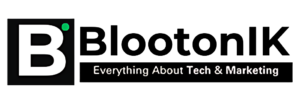Are you considering a career in design but feel confused about the roles of a graphic designer and a UI-UX designer? Don’t worry—you’re not alone. These terms are often used interchangeably, but they have distinct responsibilities. Let’s dive in to explore what each role entails, the skills required, and how to choose the right path for you.
What Is a Graphic Designer?
A graphic designer is the creative force behind visually appealing designs you see every day, like logos, brochures, social media posts, and websites. They focus on making content look good and communicate a brand’s message effectively.
Key Responsibilities of a Graphic Designer:
- Creating Visual Content: Designing images, illustrations, and layouts for both print and digital platforms.
- Branding: Developing logos and brand guidelines that represent a company’s identity.
- Typography: Choosing the right fonts to make text both readable and visually engaging.
- Color Theory: Using colors to evoke emotions and convey messages.
Example Projects: A graphic designer might create a stunning poster for a new movie or design eye-catching social media graphics for a marketing campaign.
Skills Needed:
- Adobe Creative Suite (Photoshop, Illustrator, InDesign)
- Creativity and Attention to Detail
- Typography and Color Theory
- Communication Skills
Hook: If you love art and have a knack for visual storytelling, graphic design could be your perfect fit!
What Is a UI-UX Designer?
A UI-UX designer focuses on the user experience and interface of digital products like websites, mobile apps, and software. They ensure that a product is easy to use, functional, and enjoyable for the user.
- UI (User Interface) Designer: This part of the role deals with the look and feel of a digital product. UI designers create buttons, icons, and menus, ensuring everything is visually appealing.
- UX (User Experience) Designer: UX designers work on the overall experience of a product, focusing on how users interact with it. They research user behavior, create wireframes, and conduct usability testing.
Key Responsibilities of a UI-UX Designer:
- User Research: Understanding user needs and behaviors through interviews and data analysis.
- Wireframing and Prototyping: Creating blueprints of how a product will look and function.
- Usability Testing: Testing designs with real users and making improvements based on feedback.
- Designing Interfaces: Working on the visual design to ensure it aligns with the brand and provides a seamless experience.
Skills Needed:
- Figma, Sketch, or Adobe XD
- Understanding of User-Centric Design
- Problem-Solving Abilities
- Empathy for Users
Hook: Are you passionate about making technology easy and enjoyable for everyone? UI-UX design might be your calling!
Graphic Designer vs. UI-UX Designer: What’s the Difference?
It’s easy to see why these roles are confused, but here’s a breakdown:
- Focus: Graphic designers prioritize aesthetics, while UI-UX designers prioritize functionality and user experience.
- Tools: Graphic designers often work with Adobe tools, while UI-UX designers use prototyping tools like Figma.
- Output: Graphic design is about creating visuals that convey a message. UI-UX design is about creating user-friendly digital experiences.
Example: A graphic designer would make a visually striking app interface, but a UI-UX designer ensures that app is intuitive and easy to navigate.
Tip: If you enjoy both art and technology, exploring UI-UX design might allow you to combine your passions.
Career Paths and Opportunities
Both fields offer exciting career opportunities, but which one is right for you?
Career as a Graphic Designer
- Job Titles: Visual Designer, Brand Designer, Illustrator
- Industries: Advertising, Marketing, Media, Publishing
- Freelancing: Many graphic designers choose freelancing for the flexibility to work on diverse projects.
Pros:
- Lots of creative freedom.
- Opportunities to work with various brands.
Cons:
- Can be competitive.
- May involve repetitive work.
Career as a UI-UX Designer
- Job Titles: Product Designer, UX Researcher, Interaction Designer
- Industries: Tech, Startups, SaaS Companies, E-commerce
- Remote Work: UI-UX design often offers remote opportunities, especially in tech companies.
Pros:
- High demand in the job market.
- Ability to work on impactful digital products.
Cons:
- Involves a lot of research and testing.
- Requires staying updated with ever-evolving tech trends.
Hook: With the tech industry booming, UI-UX designers are more in demand than ever!
How to Choose Between Graphic Design and UI-UX Design
Here are some questions to help you decide:
- Do you enjoy making things visually appealing? Graphic design may be the right choice.
- Are you passionate about user behavior and problem-solving? Go for UI-UX design.
- Do you prefer working with digital interfaces? UI-UX design focuses on the digital experience, whereas graphic design can involve both print and digital work.
Advice: Try both! Experimenting with different projects can help you understand which field you’re more passionate about.
Final Thoughts: Where to Start?
If you’re leaning toward graphic design, start learning tools like Photoshop and Illustrator. For UI-UX design, dive into Figma or Sketch and explore courses on user experience design.
Resources to Get You Started:
- Graphic Design: Check out courses on platforms like Udemy and Coursera.
- UI-UX Design: Start with free resources like the Google UX Design certificate.
Whether you choose to become a graphic designer or a UI-UX designer, both roles are rewarding and full of creativity. Follow your interests, keep learning, and don’t be afraid to experiment!
Got questions or need advice on choosing the right path? Drop a comment below—I’d love to chat and help you navigate your design journey!
Read More here👇👇
1). How to Choose Best Digital Marketing Services
2). How the Frontend and Backend Work Together in Web Development ?
3). How to Run Google Ads ?











